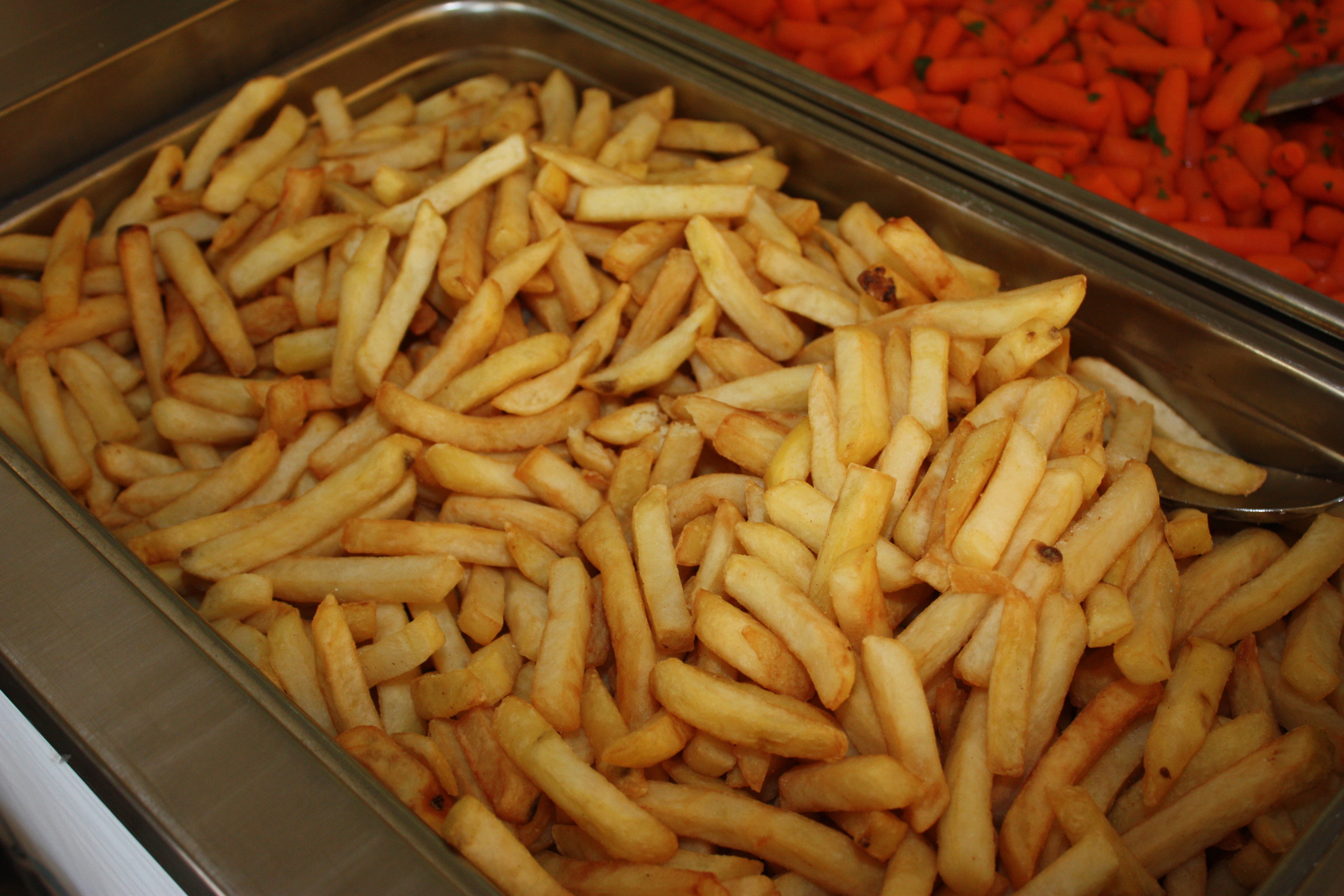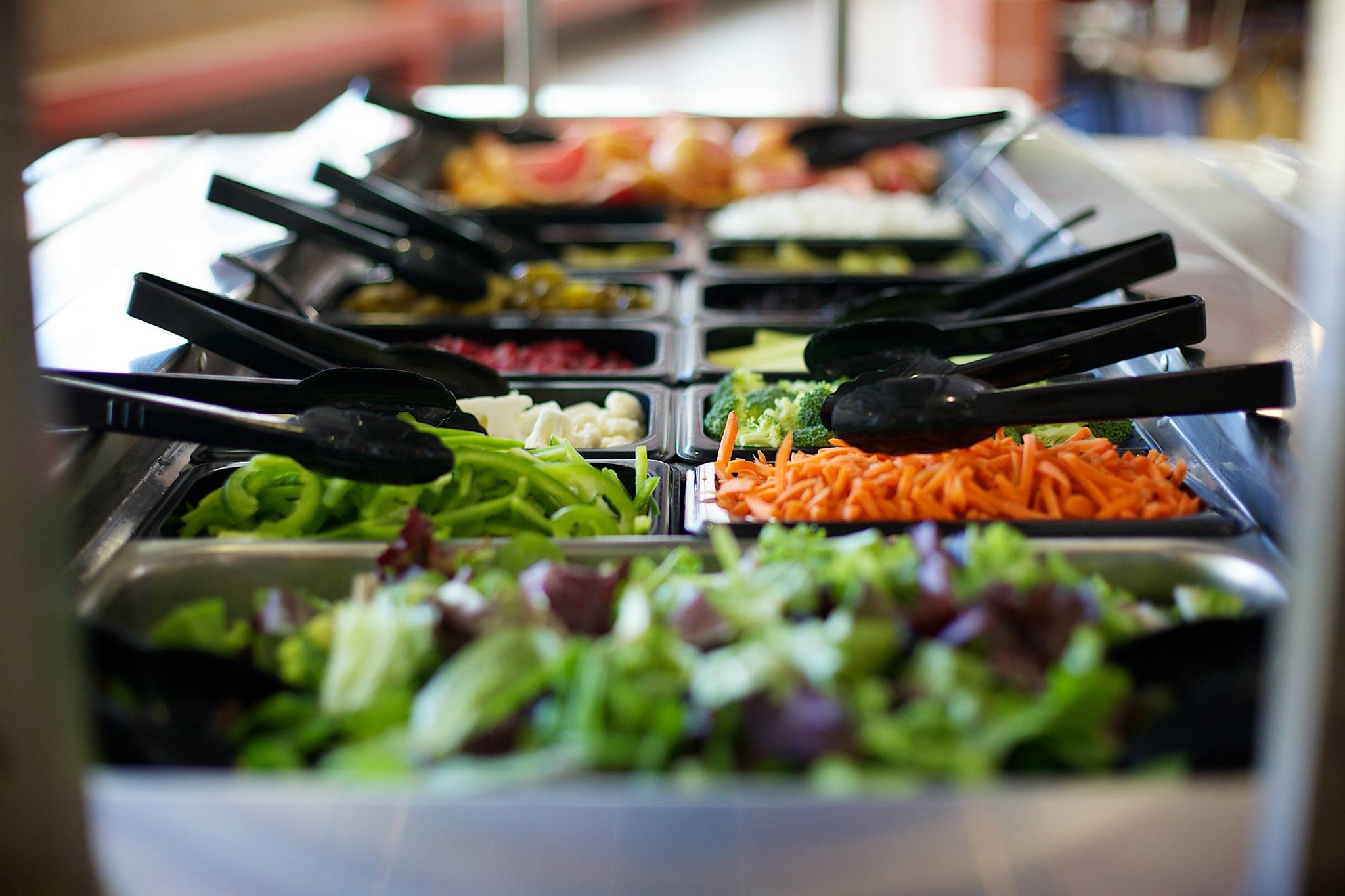This is a part of our Back to School series covering some of Colorado’s most interesting advocates and educators in the food space — stay tuned for more features all month long.
It may have been years since you tasted it, but most of us can remember the lunches we were served at school growing up.
I know I do. As someone who’s only attended public school, I’ve spent many an elementary school lunch competing in “The Burger Bounce” — a heated competition to determine which student could get their gray piece of mystery meat to bounce the highest from the lunch table. Needless to say, it was less than desirable.
I wasn’t alone in this — according to the USDA Food and Nutrition Service, more than 30 million children eat lunch from the public school lunch program every day. That’s about half of our country’s kids. Impacting that group in any way — positively or negatively — can have huge implications on our country’s future. Organizations like the Chef Ann Foundation in Boulder are leading the way in making sure that — when it comes to lunch — the impact is a positive one.
The School Lunch Problem

The National School Lunch Program (NSLP) is a federally-assisted program meant to provide public and nonprofit private schools with nutritionally balanced, affordable lunches. Started in 1946, the National School Lunch Act was signed into law by President Truman as a response to reports that at least 40 percent of World War II recruits were turned away from the military because of poor nutrition. It set nutrition standards, created a free and reduced lunch program and was largely supported as a way for US agriculture companies to use surplus crops.
But, it didn’t come without criticism. Studies found that the nation’s largest fast food chains have higher quality and safety standards for meat than the NSLP dictates (hello, bouncy gray burgers.) As more and more cuts were made to the program’s budget, items like ketchup, relish and french fries became recognized as vegetables to meet the nutrition regulations for each child’s diet.
And that’s just one side of the problem. As the budget for healthy meals through the NSLP dropped, obesity rates increased exponentially. One in every three children is overweight or obese — a number that has tripled between 1971 to 2011.
The biggest reforms made to this program were in 2010 with the Healthy Hunger Free Kids Act. It required new USDA regulations for the NSLP — including requiring more fresh fruits, vegetables, whole grains and healthy snacks. But, with the current NSLP budget, they only have $1.25 per child, per meal to accomplish this goal.
The Solution – Chef Ann Foundation
“This is how I explain the problem to most people,” said Mara Fleishman, CEO of the Chef Ann Foundation. “Most lunch programs are focused on simply reheating and serving frozen, processed food. They want to treat a chicken nugget and a bone-in roasted chicken as nutritional equals. Yes, they’re both chicken. But one has more than 30 ingredients — most of which we can’t pronounce. The other does not.”
The Chef Ann Foundation was started by chef Ann Cooper in Boulder in 2009. While working to develop the culinary program for an elite private school in New York City, her attention was brought to public school food — something that would alter the course of her career forever. She became known as the “renegade lunch lady” and began helping public schools take action to ensure every child has access to healthy food — regardless of their socioeconomic status.
Fleishman joined the Chef Ann Foundation after leading global partnerships at Whole Foods for 13 years. Part of her position at Whole Foods involved working with the company’s national philanthropy partners — one of which was the Chef Ann Foundation. As she learned more about the organization’s work, she knew she needed to get involved.
“After awhile, it’s hard to stay motivated to convince upper and middle-class families eat healthy,” she said. “The Chef Ann Foundation is addressing our nation’s nutrition problems at the source by reaching young kids at all income levels. More than 70 percent of the children in the NSLP are on free or reduced lunch, in families making less than $44,000 per year. If you’re looking for a way to impact low-income families and children, this is the most encompassing one.”
The team does this by providing schools with the tools, training, resources and funding needed to take their lunch programs in-house. Right now, most schools don’t have the equipment, time, money or energy to do this — not to mention many people on these lunch staffs aren’t trained to do anything but reheat frozen food that comes from a bag.
“We have to look at it from a social justice perspective,” Fleishman explained. “I always knew I was going to feed my children healthy food, but how is it fair that my kids get this healthy lunch I’ve made at home, and those kids receive far less? How can we expect children to thrive and achieve when so many aren’t being nourished properly? The playing field is uneven, and this is one of the best ways to give the youngest generation an opportunity to succeed.”
The foundation has several programs that make this feasible. The “Let’s Move Salad Bars to Schools” program is a grant-based one that focuses on one change — adding a salad bar to the lunch program that’s already in place. This is a change that many schools can implement because it has a low operational barrier to entry, but it also has the opportunity to make a big impact. Since starting, they have put 5,000 salad bars in schools across the country — more than 100 of which are in Colorado. They also provide larger grants for complete program overhauls and a free online resource center called “The Lunch Box.” It has everything a school would need to make these changes — from step-by-step operational guides to more than 300 USDA compliant recipes.
These operational changes are partnered with educational programs to help the children understand why incorporating more fruits and vegetables into their diets is important.
“We always get push back,” she explained. “People say, ‘Why serve children food that they won’t eat?’ But I think their unwillingness to eat healthy food is a little overrated. When we make the swap in schools, there is a dip in participation in the first year, but then it always recovers. There is a process of understanding, trial and acceptance that kids need to go through. We change their minds, then we change their palates. There’s a bigger issue than comparing a chicken nugget and roast chicken going on here. The bigger issue is how we value food, meal time and quality.”
The Change in Action – Boulder Valley School District
In addition to her nationwide advocacy work, Cooper uses the principles she preaches daily as the director of food services for the Boulder Valley School District (BVSD). It serves as a shining example of what all schools could be if they took their food programs in house.
“The BVSD Food Services works hard to serve the best possible food to every child, every day because we know it makes a difference to their health and well-being,” Cooper said.
The BVSD follows all NSLP rules — every meal is executed at the cost of no more than $1.25 per child. But, you’ll notice something very different here.
For example, here’s a sample of what BVSD children have eaten for lunch lately — oven-roasted chicken with brown rice and roasted summer squash, local tomato and pesto pizza, fireside broccoli and cheese-stuffed potatoes and more, always with an unlimited salad bar. The schools also host nearly 200 education programs a year, including farmer visits and field trips, chef demonstrations, gardening in the BVSD greenhouse and — my personal favorite — “rainbow days” where BVSD opens the salad bar and encourages children to try new fruits and vegetables.
“I know what people say — ‘Well, of course, that can happen in Boulder.’ But they’re executing these programs as any other school in the country could. They’re completely compliant,” Fleishman said.
It’s true — you can view all of BVSD’s education and marketing tools for free on the Chef Ann Foundation’s “The Lunch Box” resource site.
Because it was ground-zero for many of these processes, the foundation hopes that BVSD can serve as a model and inspiration to other schools ready to make a change.
“It’s interesting. Colorado definitely sets a higher bar than other states,” Fleishman said. “But if we can’t get everyone to engage in this movement, we’ll be out of luck. We have to look at putting our philanthropic efforts towards causes that have the opportunity to make the most impact, and this is definitely one that has the ability to shape our future.”
To learn more about the Chef Ann Foundation, click here.





